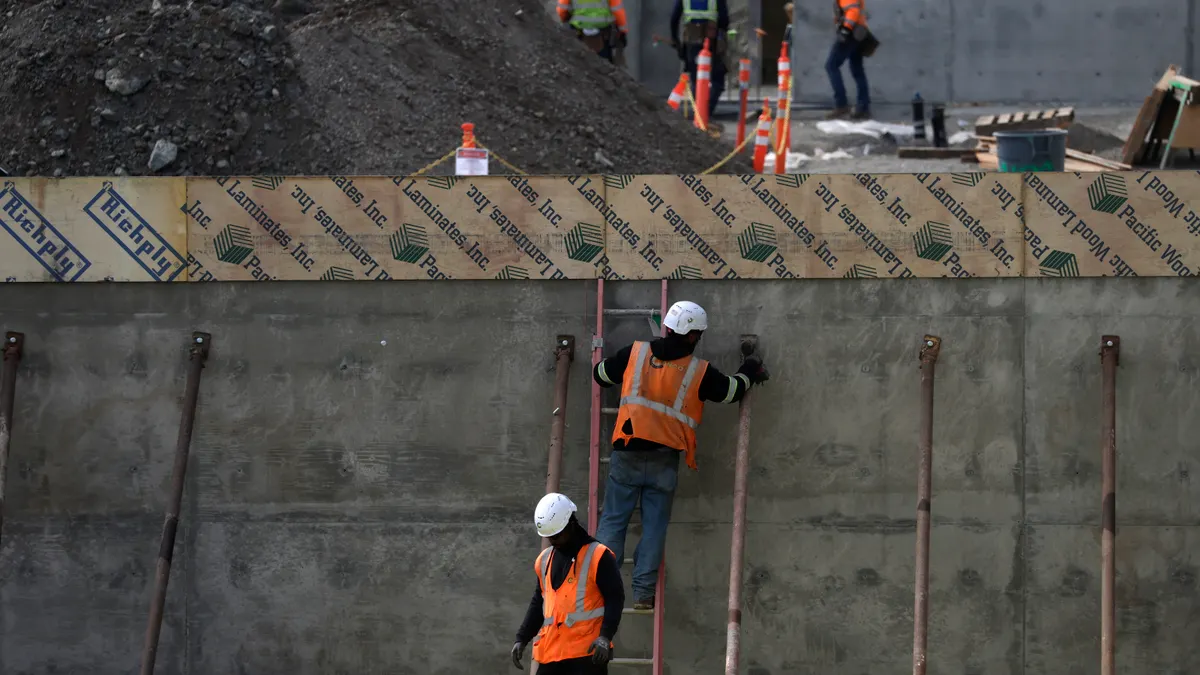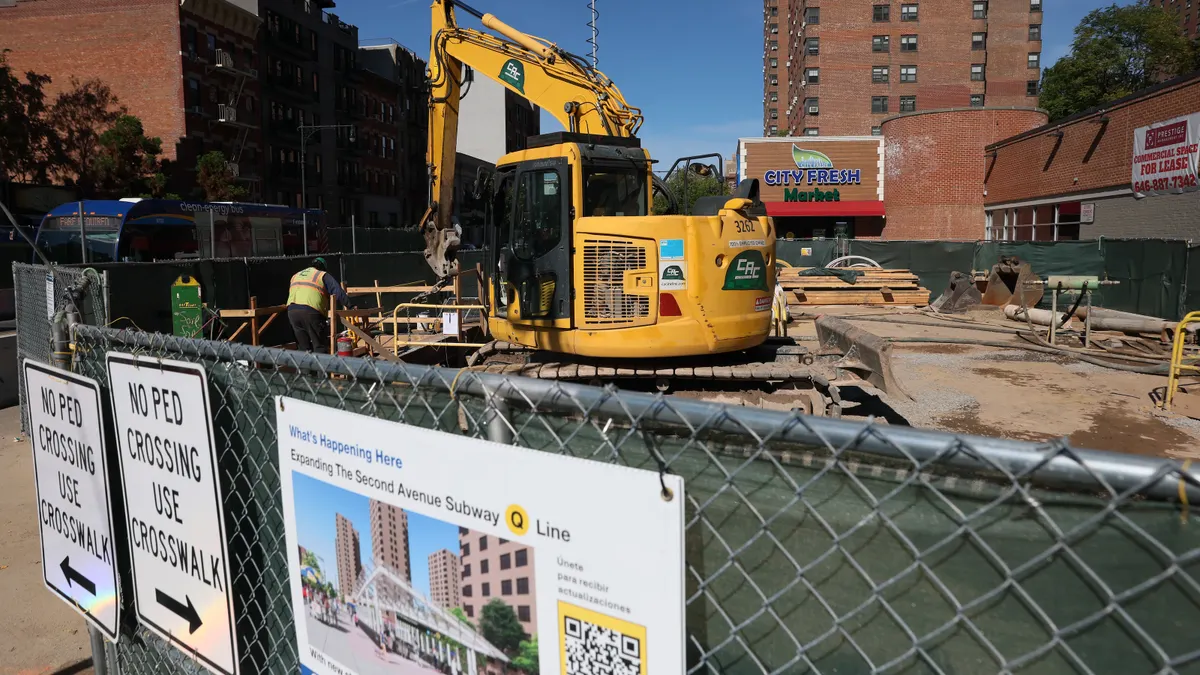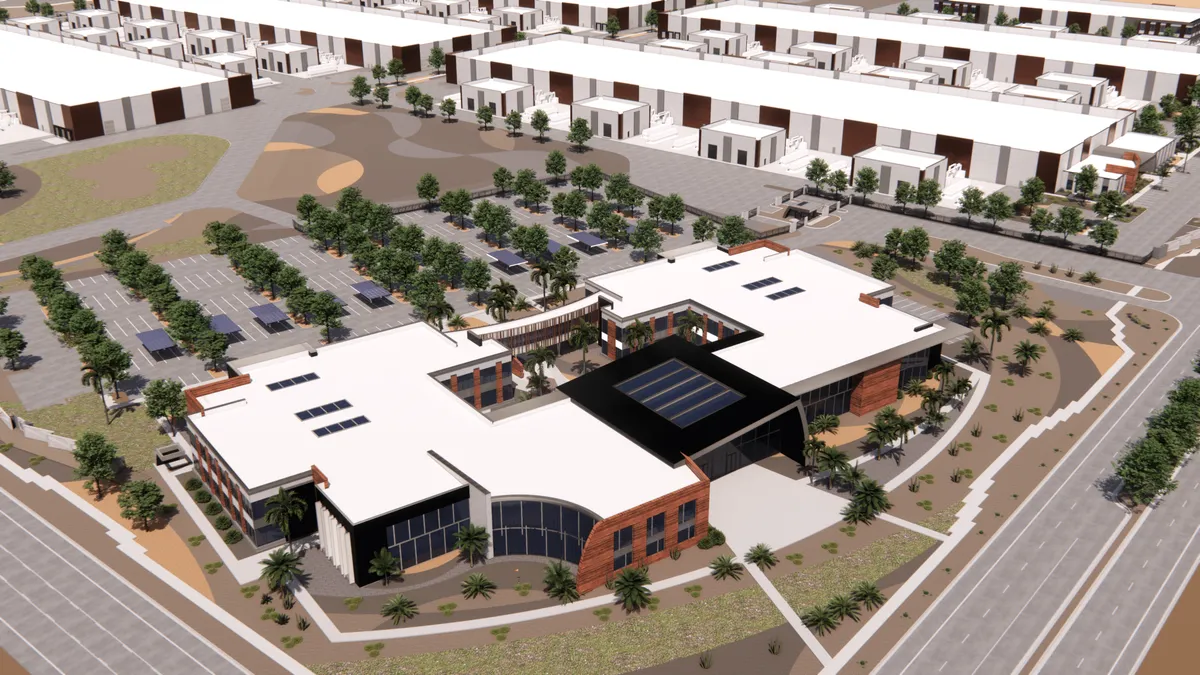Nearly a decade ago, the construction industry, along with the rest of the country, sank into what is now referred to as the Great Recession. Investment banks shut their doors, unemployment skyrocketed and funding was yanked out from underneath myriad construction projects, the evidence of which can still be seen in unfinished, now-blighted neighborhoods and half-started commercial developments in some boom-bust areas of the country.
The construction labor shortage — largely resulting from approximately 2 million workers leaving during the recession — has been a consistent concern for the industry, but now, a different hurdle now seems to be emerging. According to the AGC, the public sector, which was buoyed in recent years by stimulus spending bills, has started to report a decline in activity in some areas of the country, which has left it with somewhat of an employee surplus.
The recession's impact on construction — by the numbers
The U.S. Census Bureau reported that construction spending was at $1.2 trillion in prerecession March 2006, with the residential ($672.9 billion) and private nonresidential ($267.9 billion) sectors booming. Fast forward to a year later, and residential was down more than $100 billion to $568.8 billion with a modest rise in nonresidential spending left to buoy a flagging industry. Even though 2009 is considered the end of the recession, construction companies struggled to stay afloat, and total spending hit an 11-year low of $761 billion in February 2011.
Along with that dismal figure came a 20% rate of construction unemployment, twice the national average and the highest of any industry in the U.S. At the time, the Associated General Contractors of America noted that even though the rest of the country's economy seemed to be moving in the right direction, construction was bleeding and needed more stimulus than what was being provided by the government in the form of heavy and civil engineering projects.
Not until 2012 did the construction industry really go into full recovery mode, according to Dodge Data & Analytics Chief Economist Robert Murray, with the latest spending numbers at $1.15 trillion for September 2016. Residential isn't as dominant as it was prerecession at $453.7 billion, but, still, that level of activity — along with private nonresidential spending at $426 billion — has driven construction employment down to 5.2% in September 2016, the lowest September rate since 2000.
While a thriving construction industry benefits companies and the broader economy, the increase in activity has put a strain on the skilled labor workforce. Major trade groups have reported that a majority of contractors are having difficulty finding skilled workers. Some workers who turned to the energy sector for employment have filtered back into private construction as oil and gas prices have plummeted, but the recession pushed others out for good.
In addition, the employment pipeline has grown thin as younger people are choosing other careers and older workers are aging out into retirement. In fact, last year the Bureau of Labor Statistics said that the good news of a projected 790,000 additional construction jobs by 2040 was slightly tempered by the prospect of the lowest overall employment participation rate (60.9%) since 1973.
A different situation for infrastructure firms
Despite the rebounds in private construction, the public sector has seen ongoing spending declines in recent months. In October, public spending was down 0.6% from October 2015.
"The labor market is tighter than it was five years ago," said Brian Turmail, executive director of public affairs for the AGC. "Tight for commercial builders but not as tight for infrastructure builders." Although the industry is still strong, Turmail said now is the time to prevent further erosion by increasing investment in public works projects.
"All of a sudden, construction has this starring role in rebuilding the economy"

Brian Turmail
Executive director of public affairs for the AGC
Through analysis of Commerce Department spending data and anecdotal evidence from members, Turmail said it's evident that heavy engineering and civil contractors in states that have been more generous with public works funding are busier than those in states that have relied on federal stimulus packages only. "Workers in West Virginia are praying for a phone call, and construction workers in the (San Francisco) Bay Area are hoping it doesn't ring because they're busy," he said.
Calling it a "post-stimulus slowdown," Turmail said many state economies never fully recovered from the recession and, without federal dollars, investment in highways, bridges and other public projects has stagnated.
As far as how many workers are waiting for work in the public sector to pick up, Turmail said that depends on the region of the country. "What you've got is a lot of highway work staffed 80% to 90%, with contractors trying to hold onto employees because they're experienced," he said. Of course, some states have seen worse, and contractors there might not have the luxury of retaining the number of workers they'd like.
Jeff DiStefano, vice chairman of the New York State chapter of the AGC and CEO at Harrison and Burrowes Bridge Constructors outside of Albany, NY, said the demand for skilled workers varies depending on the area of the country, but the northeast in general hasn't seen the same labor shortage severity as contractors in other states.
However, things are different closer to home, according to DiStefano. He pointed to the Hudson Valley's many "megaprojects" underway — worth billions of dollars — including the Tappan Zee Bridge.
Those types of projects use a high percentage of organized labor, and trade groups that supply labor are experiencing worker shortages, according to DiStefano. "We do a fair amount of work in the Hudson Valley, and this year is the first year we've seen a tightening," he said. DiStefano noted that ironworkers are coming from as far away as Buffalo and Canada. He added that not many skill sets can cross over between homebuilding and bridge construction.
How will Trump's promises impact infrastructure builders?
And what happens if President-elect Donald Trump's $1 trillion infrastructure plan comes to fruition? Again, the results will vary by region. "I think it will be a stretch to find qualified, good help," said DiStefano, who added that the northeast, just like every other area of the country, is struggling with drawing in new workers and seeing experienced ones retire.
Turmail said that nationwide, contractors are reporting that they can handle the potential public works boon, especially because it would be spread out over 10 years under Trump's proposal. "Some markets will be tight and bring in workers from out of town, but members are telling us they could absorb the work," he said. It could also mean overtime and more wear and tear on equipment, but he said it's nothing that contractors can't handle.
Turmail said he hopes that Trump's transition team will take the opportunity to suggest investments in construction career training, not only for high school students and younger workers but for military veterans as well. Because of all the press around Trump's plan, Turmail said the industry might be able to get some real traction in creating a more robust pipeline. It could also make the construction industry a more attractive and compelling career choice with at least 10 years of work opportunities guaranteed.
"All of a sudden, construction has this starring role in rebuilding the economy," he said.





















